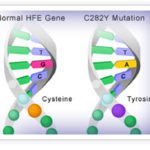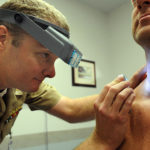Celiac disease is an autoimmune disorder that is characterized by an intolerance for gluten (a protein most commonly found in wheat, barley, and rye). Consuming gluten triggers an immune response that causes inflammation in the lower intestine that can permanently damage the intestinal lining. This damage results in malabsorption of essential nutrients and can lead to stomach … [Read more...] about Fact Sheet: Celiac Disease
Fact Sheet
Fact Sheet : Hemochromatosis
Hemochromatosis (he-moe-krome-uh-TOE-sis) Hereditary hemochromatosis is a disease caused by a recessive genetic mutation that makes the body absorb too much iron, resulting in excess amounts being deposited in vital organs, most commonly the liver, heart, and pancreas. Luckily, only a small number of people with the genetic mutation develop serious problems, but even so, … [Read more...] about Fact Sheet : Hemochromatosis
Fact Sheet: Skin Cancer
The Fitzpatrick Factor The father of modern academic dermatology and a giant in the advancement of clinical and investigative dermatology, Dr. Thomas B. Fitzpatrick was born in Madison, Wisconsin on December 19, 1919. Fitzpatrick went on to serve nearly 30 years as the chairman of the Department of Dermatology at Harvard Medical School and Chief of the Dermatology Service at … [Read more...] about Fact Sheet: Skin Cancer



